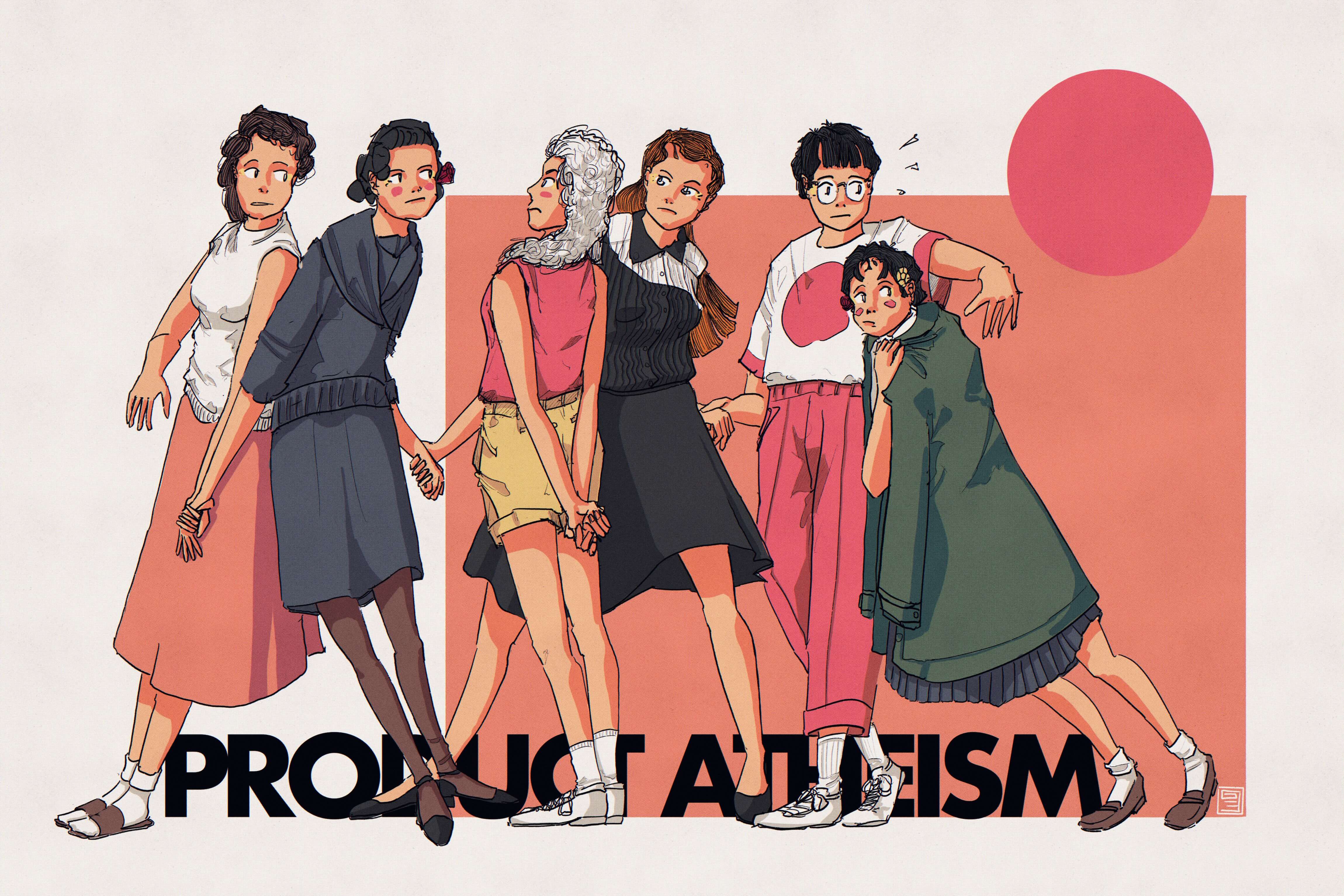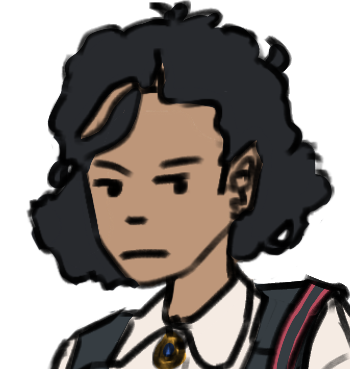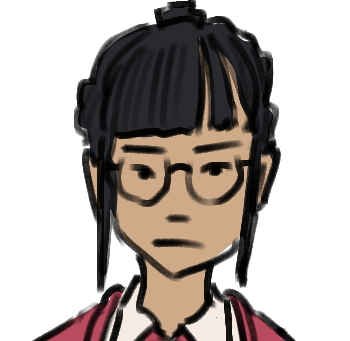NEW Story: Cocktail
Mittens and Metaphysic — Product Atheism and Vekllei object-form

This article is not part of Vekllei canon. It may be old, obsolete or just a bit of fun.
✿ This article was featured in Issue #6 of the Atlantic Bulletin
Pictured above: various fashions worn by Vekllei women, showcasing heavy cold-weather dresses, simple styling, strong geometric shapes and colours, loose fits, and modest hemlines.
Pictured below: postmodern neomarxism, which I’ve tricked you into reading with anime.
Previous posts on the Vekllei economy, if you’re new:
Vekllei’s obvious contradictions are commonly referenced, but not always clear. Why are parts of Vekllei epistemology, or the ‘Vekllei way of thinking,’ contradictory? And if these are contradictions, then surely they must fall apart when they’re examined? How is it possible to hold two contradictory ideas at the same time and apply them? Let’s look at Product Atheism, Vekllei’s foundation for necroeconomics.
Atismoprodarte, lit. “product atheism,” is the process by which Vekllei culture breaks down and rebuilds social preconceptions of objects, including products. Vekllei does not really have commodities in the traditional idea of the word, so it is supplemented here by ‘product,’ which more closely resembles the Vekllei word for commodity-forms: prodart or prodatte. This concept is a part of Upen, which is found throughout Vekllei culture and its constitution, and coexists agnostically with organised religion.
“Product Atheism” is the term for how Vekllei people think about the objects that make up their lives — clothes, appliances, toys, trinkets and treasures. These things are not quite commodities, because they are not “sold”. Vekllei does not use money, and so it does not produce items of any economic value.
An object’s economic form, then, is replaced by social form. Among Marxists, they call these social forms fetishistic, because products are given lives of their own and exist independently of the labour that created them. But this doesn’t work in Vekllei, because
• Labour-value is social, not economic. Vekllei people are not paid for work and they do not pay money for products. All work is for social reasons; all consumption is for social needs. Any object that is prohibited from the ordinary Vekllei person is merely landscape; it has no form.
• Labour-value is simultaneously suppressed, in imitation of commodity, and celebrated, in imitation of dereification. Vekllei shops look like any foreign shops, because they participate in the same fantasy ritual of shopping and allow easy access to products. At the same time, Upen emphasises the importance of local consumption and objects made by hand, and so Vekllei appliances are generally hand-made. This creates a social bond between the producer and consumer, and breaks down commodity-form, but it can’t escape the fetishised valuations encouraged by the consumer-fantasy. So it is neither a social or economic product while being both; resulting in a permanent contradiction.
In fact, Vekllei ‘Product Atheism’ is more or less a rejection of Marxist commodity fetishism, and instead advocates product-worship. This is because objects in Vekllei are regarded as fantasy, and are eroticised by a fantasy market. This is a symptom of the unspoken truth most foreigners are well aware of — Vekllei does not have an economy; the Vekllei economy is dead; the economy has been reanimated and is zombified. No money changes hands, no product has value, and all products are abstracted and exclusively physical simultaneously.
Thus Product Atheism has two contradictions; first, that the participatory market economy of Vekllei is both alive and dead, making it both undead and unaliave, and second, that products are both abstracted by Product Atheism and then unabstracted through Product Atheism at the same time, leaving them formless and unconstructed — and, per Upen’s definitions, truly personal and intimate.
Acknowledging this necroeconomic construction destroys it, and so a final truth is revealed. In Vekllei, the exchange of objects is a social formality, like their uniforms and sign-language, and is both entirely superfluous and essential to the functioning of the state. This is not Marxism; this is not even economic; this is Vekllei, and its cultural forms are what determine all constructions of society. Vekllei’s ‘material form’ is actually cultural, and Upen is its culture.
Since Vekllei economic forms are not truly economic, it makes sense that Product Atheism does not merely apply to the economy. All products, or objects, are part of its frameworks. The example used in this picture, depicting women’s fashion, is a good example of how Upen brings together an abstract object value and a valueless physical object simultaneously. Clothes in Vekllei have a very powerful social function, enhanced by how colour and shape become forms of communication in themselves as part of Vekllei semaphore. Clothes are both figuratively and literally signifiers of personality and individual expression.
In Vekllei written script, called Topet, most traditional clothing items are each assigned a single character, giving them a transcendental pictographic quality, a feature impossible to replicate in phonetic speech. In this sense, the written description of a dress in Vekllei supersedes its spoken equivalent, privileging pictorial, transcendental imagery over literalism. This poetic form is part of product-worship, and thus part of Product Atheism. This means that, without even touching the sociological tastes and trends of clothing fashion in Vekllei, we can see Product Atheism smashing Western frameworks against their own assumptions, leaving much of Vekllei epistemology, even today, incomprehensible to ideology without Upen as its framework.

